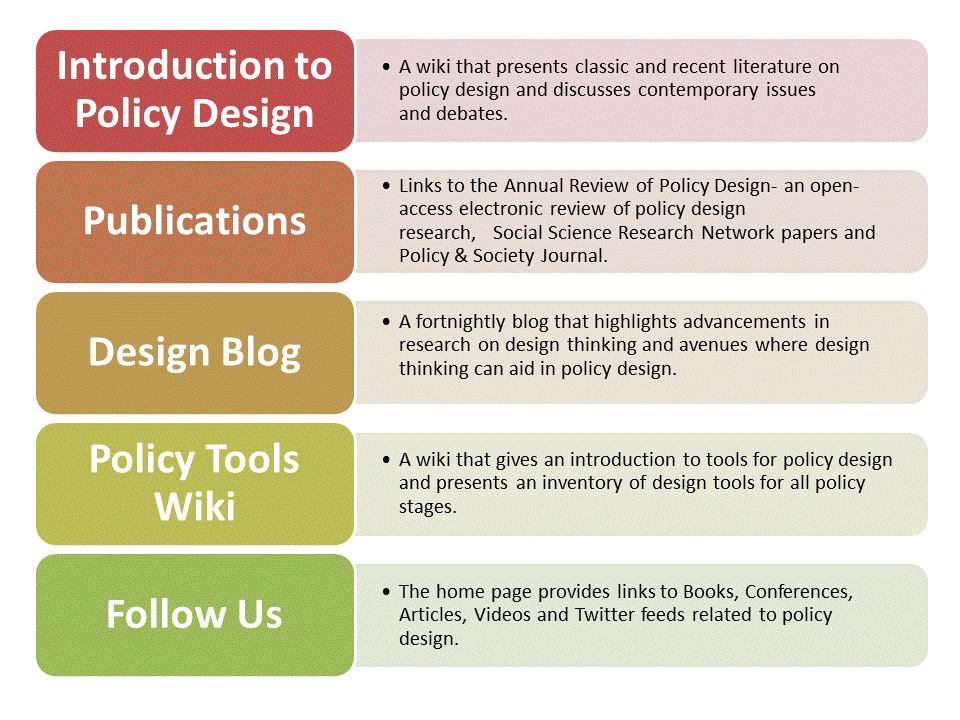Just like a lab in a field allows for testing of ideas, methods and hypotheses, labs can be designed in almost every sphere that we operate. This Lab site contains several elements:
Why a Lab?
The idea of a design lab has gained momentum in recent years and in many ways this suggests that people want to collaborate, brainstorm, cooperate, learn and experiment. The policy sphere has been a key recipient of the outputs from many such labs. There is much reference material for policymakers available in print form. While these provide useful information on policy design tools and methods, these often offer little room for a two-way learning or a dialogue with the policy practitioner who would want to experiment with these tools, adapt them as per context, or even offer feedback from the policy application of these tools. The emergence of online portals for policy practitioners in the form of tool kits and manuals, in principle mark an effort to present bulky articles in an easily accessible and user-friendly format to practitioners.
However there is still no active online comprehensive inventory of policy tools that policymakers can readily refer to for policy design.
Many web-based efforts in Europe and elsewhere from past years are no longer live sites. These provide suggestions or useful “steps” for policy design which are not emerging from or being traced back to theory and empirical studies in the policy sciences.
Most sites have blogs and/or links to Twitter and Facebook where they are most active. Some initiatives specifically deal with social issues and specific sectors only such as health. Others are information sources for policymakers, practitioners and policy researchers that provide links to research documents/reports covering policy toolkits, provide links to ‘design thinking’, or provide a discussion forum for stakeholders, or are simply a source to further reach out to a team of experts who can then provide bespoke advice.
The active engagement of practitioners however takes time and for any fruitful result it needs to be gradual and sustained. Many of such lab efforts are unfortunately limited by funding and time over which a consistent team can commit themselves to sustaining the lab. So from where this design lab project is today, i.e. inventorizing policy design tools, we aim to eventually operate as an active interface between public policy researchers and practitioners for brainstorming and designing policy solutions, emerging as a dynamic lab in the true sense.
How to Use the Lab Website & Wiki?
The website and wiki are open access but in order to avoid spam require users who wish to add wiki content to have an account and be logged-in. Please proceed to the log-in & register form on the sidebar menu to create an account or log-in to the site using your Facebook, Google or Twitter social media account. Subscribers may then create and edit wiki entries.
Background Readings
 Designing public policies: principles and instruments
Google Books
Designing public policies: principles and instruments
Google Books
 Policy design for democracy
Google Books
Policy design for democracy
Google Books
 Smart regulation: designing environmental policy
Google Books
Smart regulation: designing environmental policy
Google Books
Current Research
|
Nesta. Prototyping in Public Services. London UK: NESTA, 2011. |
Howlett, Michael, and Jeremy Rayner. “Patching vs Packaging |
Taeihagh, Araz, René Bañares-Alcántara, and Moshe Givoni. |







